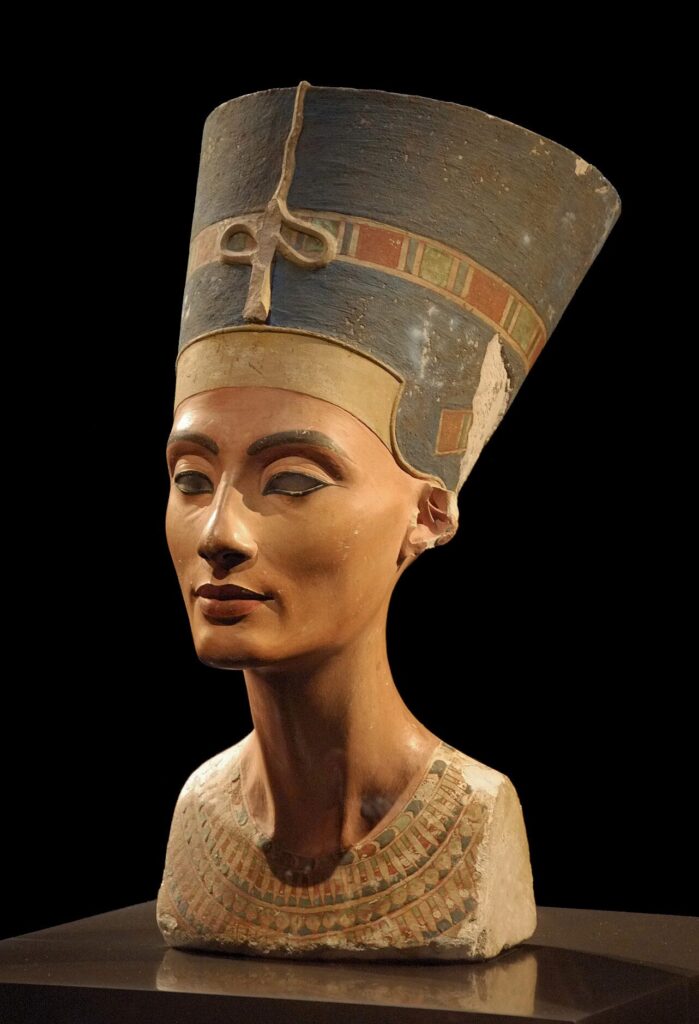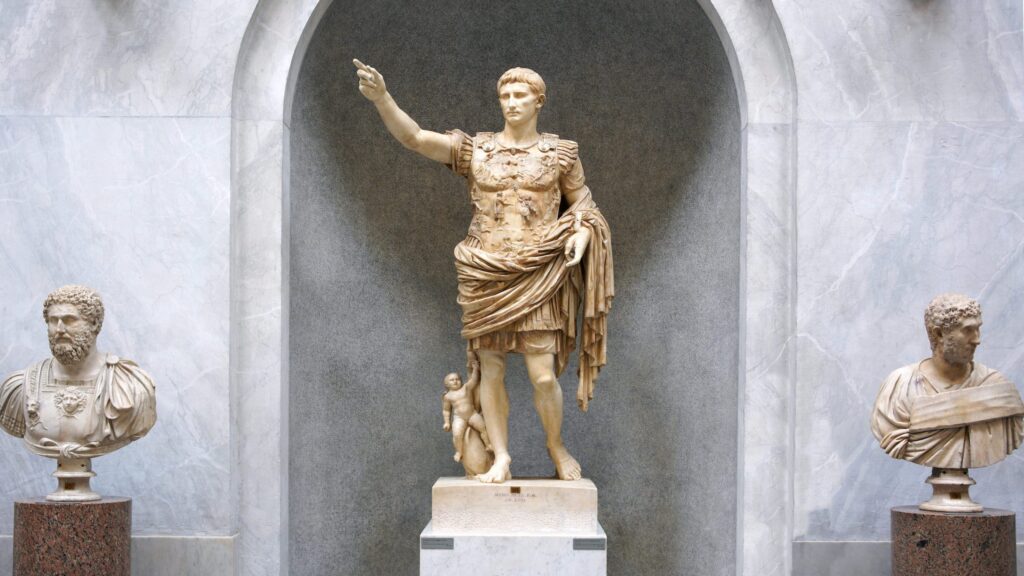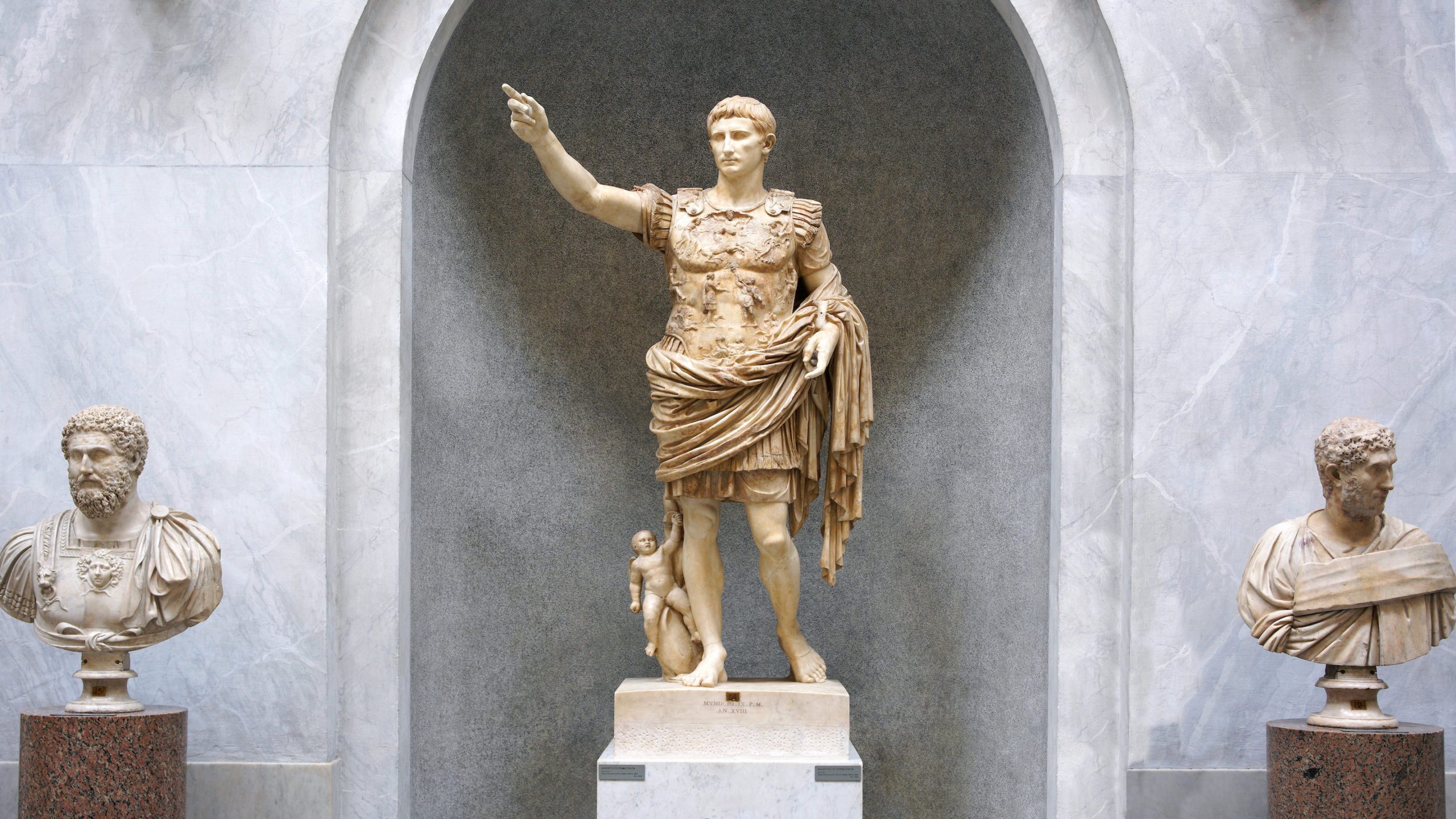Introduction
The art of portraiture has been a vital means of preserving human likeness since antiquity. Among the most enduring and captivating forms of ancient sculpture are the busts and portraits of Egypt, Greece, and Rome. These works served religious, political, and commemorative purposes, reflecting each civilization’s values, aesthetics, and technological advancements.
This article delves deep into the history, techniques, and cultural significance of ancient portraiture, providing detailed insights into the evolution of sculptural art across these three great civilizations.
1. Egyptian Portraiture: Divine Perfection and the Afterlife (c. 3000 BC – 1st Century AD)
Egyptian art was not merely decorative—it was functional, designed to ensure immortality and maintain cosmic order (ma’at). Portraits, whether in relief, painting, or sculpture, followed strict conventions to convey divinity and permanence.
Key Characteristics and Techniques
- Frontal and Symmetrical: Figures were depicted in rigid, formal poses, with faces in perfect profile or frontal view.
- Hierarchical Proportions: Size indicated importance—gods and pharaohs were larger than ordinary people.
- Materials: Limestone, basalt, granite, and (later) wood and stucco. Gold leaf was used for royal and divine figures.
- Funerary Context: Statues and busts were placed in tombs to serve as eternal vessels for the ka (spirit).
Evolution of Egyptian Portraiture
- Old Kingdom (2686–2181 BC): Idealized, serene faces (e.g., Statue of Djoser, 2650 BC).
- Middle Kingdom (2055–1650 BC): More individualized, expressive rulers (e.g., Senusret III, c. 1850 BC).
- New Kingdom (1550–1069 BC): Greater realism under Akhenaten (e.g., Nefertiti Bust, c. 1345 BC).
- Ptolemaic Period (305–30 BC): Blending of Greek and Egyptian styles (e.g., Fayum Mummy Portraits, 1st–3rd century AD).


Famous Examples
- The Great Sphinx (c. 2500 BC) – Possibly bearing the face of Pharaoh Khafre.
- Bust of Nefertiti (c. 1345 BC) – A masterpiece of the Amarna Period, showcasing delicate realism.
- Statue of Hatshepsut (c. 1470 BC) – One of the few female pharaohs, depicted with a ceremonial beard.

2. Greek Portraiture: From Archaic Rigidity to Hellenistic Emotion (c. 800–146 BC)
Greek sculpture evolved dramatically, moving from stiff, symbolic forms to naturalistic, emotionally charged representations. The Greeks sought to capture the ideal human form, blending mathematical precision with lifelike vitality.
Key Phases and Styles
- Archaic Period (800–480 BC)
- Kouros and Kore statues: Frontal, rigid poses with the “Archaic smile” (e.g., Kroisos Kouros, c. 530 BC).
- Classical Period (480–323 BC)
- Contrapposto: Introduction of weight shift for realism (e.g., Doryphoros by Polykleitos, c. 440 BC).
- Idealized Beauty: Gods and athletes portrayed in perfect proportion (e.g., Zeus of Artemision, c. 460 BC).
- Hellenistic Period (323–31 BC)
- Dramatic Realism: Wrinkles, aging, and intense emotion (e.g., Laocoön and His Sons, c. 200 BC).

Saqqara, Mastaba of Ranofer (no.40)
A. Mariette’s excavations (1860)
First half of dynasty 5 (around 2450 B.C.)
Egyptian Museum Cairo
Portrait Busts of Notable Figures
- Homer (7th century BC, Hellenistic copies) – The blind poet depicted with deep wrinkles and a vacant gaze.
- Alexander the Great (4th century BC) – Spread the Greek portrait tradition across the empire.
- Demosthenes (c. 280 BC) – A later bust showing the orator in deep thought, with a furrowed brow.
Materials and Techniques
- Marble and Bronze: Most surviving Greek busts are Roman marble copies of lost bronze originals.
- Chryselephantine: Gold and ivory used for colossal cult statues (e.g., Athena Parthenos).
3. Roman Portraiture: Verism, Propaganda, and Imperial Power (c. 500 BC – 476 AD)
Roman portraits were deeply practical—used for political propaganda, family lineage, and public commemoration. Unlike the Greeks, the Romans valued hyper-realism (verism), especially in the Republican era.
Key Developments
- Republican Era (509–27 BC)
- Veristic Portraits: Deep wrinkles, balding heads, and sagging skin to convey wisdom (e.g., “The Old Roman”, 1st century BC).
- Imperial Era (27 BC – 476 AD)
- Augustan Idealism: Augustus (27 BC–14 AD) revived Greek-style idealism to appear godlike.
- Flavian Realism: Emperors like Vespasian (69–79 AD) returned to rugged realism.
- Late Antiquity (3rd–5th century AD): Abstract, symbolic representations (e.g., Constantine the Great, 4th century AD).

Famous Roman Busts
- Julius Caesar (c. 44 BC) – One of the first living Romans to be deified in portraiture.
- Augustus of Prima Porta (1st century AD) – A propaganda piece showing him as a divine leader.
- Marcus Aurelius (c. 170 AD) – A philosopher-emperor with a contemplative expression.

Funerary and Domestic Use
- Death Masks (Imagines) – Wax or plaster casts of deceased nobles for funeral processions.
- Household Shrines (Lararia) – Busts of ancestors (imagines maiorum) were kept in aristocratic homes.
Conclusion: The Enduring Legacy of Ancient Portraits
From the eternal idealism of Egypt to the harmonious beauty of Greece and the striking realism of Rome, ancient busts remain some of the most evocative relics of antiquity. These portraits were not mere decorations—they were political tools, religious icons, and personal memorials.
Today, museums worldwide preserve these masterpieces, allowing us to gaze into the faces of rulers, poets, and ordinary people who lived millennia ago. Their artistry continues to influence modern sculpture, reminding us of humanity’s timeless desire to capture identity in stone and metal.
Further Exploration
- British Museum (London): Houses the Rosetta Stone and Egyptian pharaonic busts.
- Vatican Museums (Rome): Features the Laocoön and imperial Roman portraits.
- National Archaeological Museum (Athens): Showcases Classical and Hellenistic Greek masterpieces.
- Ancient Portraits: A Detailed Exploration of Egyptian, Greek, and Roman Busts
- Ancient Portraits: The Timeless Art of Egyptian, Roman, and Greek Busts
- Portraits of the Divine: Religious and Mythological Figures in Art
- Exploring Color Theory in Portrait Painting
- Beginner’s Guide to Choosing the Right Medium

